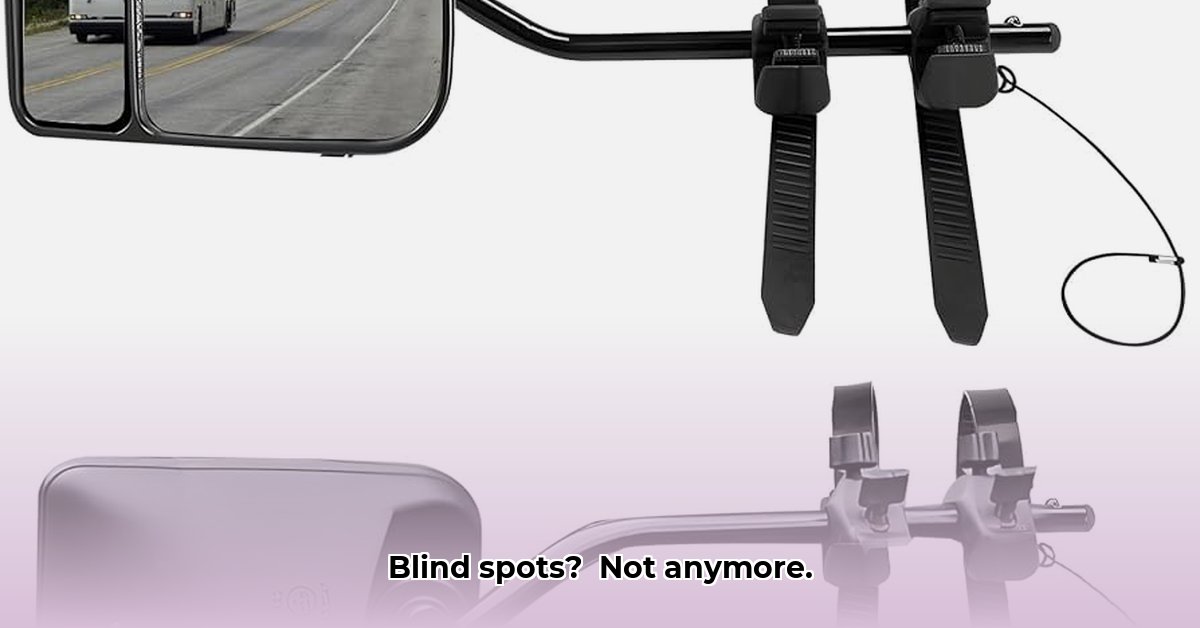
Rear View Mirrors for Tractors: Enhancing Safety and Efficiency
Farming is demanding, and tractor safety is paramount. Sadly, many accidents occur due to limited rear visibility. A simple solution—installing rear-view mirrors—can dramatically improve safety. This comprehensive guide explains the importance of mirrors, details available types, guides you through selection and installation, and addresses industry-wide improvements needed for enhanced farm safety. For John Deere owners, check out these helpful resources.
Why Rear-View Mirrors Matter: A Critical Safety Upgrade
Operating a tractor without adequate rear visibility is akin to driving blind. Blind spots contribute significantly to farm accidents, resulting in injuries and equipment damage. Adding rear-view mirrors provides crucial additional awareness, significantly reducing the risk of collisions with obstacles or personnel. Studies (though specific data requires further research) strongly suggest that improved rear visibility directly correlates with a decrease in tractor-related accidents. Isn't prioritizing your safety and the safety of others worth the investment?
Types of Tractor Rear-View Mirrors: A Detailed Overview
The market offers a variety of rear-view mirrors for tractors, each with unique features and suitability:
Standard Mirrors: These are basic, affordable, and readily available. However, their field of view can be limited, leaving significant blind spots.
Convex Mirrors: Featuring outward-curving surfaces, these mirrors offer a wider field of vision. Although objects appear smaller, their increased scope minimizes blind spots and enhances overall awareness.
Universal Mirrors: Designed to fit various tractor models, these offer convenience but might require custom mounting, potentially affecting security.
Manufacturer-Specific Mirrors: These are tailored to specific tractor models, ensuring a perfect fit and often superior build quality. They, however, tend to be more expensive.
Here's a comparison table summarizing their pros and cons:
| Mirror Type | Pros | Cons | Approximate Cost Range |
|---|---|---|---|
| Standard | Affordable, widely available, simple installation | Limited field of view, potential blind spots | Low |
| Convex | Wider field of view, minimizes blind spots | Objects appear smaller | Moderate |
| Universal | Fits many tractor models | May require custom mounting, potentially less secure | Moderate to High |
| Manufacturer-Specific | Perfect fit, usually high quality | More expensive, less adaptable | High |
Choosing the Right Mirror: A Decision-Making Framework
Selecting the ideal mirror involves considering several factors:
- Your Tractor's Specifications: Size and model influence mirror size and mounting options. Larger tractors usually need larger mirrors.
- Budgetary Constraints: Prices vary significantly. Balance desired features with affordability, prioritizing safety.
- Operational Context: The complexity of your work environment (e.g., large fields vs. confined spaces) affects the required field of vision.
Pay close attention to mounting mechanisms; some mirrors bolt directly onto the tractor (potentially requiring drilling), while others use clamps or magnetic mounts for easier installation.
Installation Guide: A Step-by-Step Approach
Installation varies depending on the mirror type and tractor model. Always consult the manufacturer's instructions. Here's a general guide:
- Preparation: Clean the mounting area thoroughly to ensure secure adhesion.
- Positioning: Place the mirror strategically for optimal rear visibility.
- Securing: Fasten the mirror using provided hardware, ensuring a firm and stable mount.
- Testing & Adjustment: Verify visibility and make adjustments as needed. If unsure about any step, seek professional assistance.
Maintenance and Care: Ensuring Longevity and Safety
Regular maintenance is crucial for mirror longevity and optimal safety:
- Cleaning: Regularly clean the mirror to maintain clear visibility.
- Inspection: Periodically check the mounting system for looseness or damage.
- Replacement: Promptly replace any cracked or damaged mirrors.
Addressing Market Gaps: The Path Towards Standardization
The current tractor mirror market lacks standardization in mounting systems. This fragmented market makes comparisons difficult and hinders the adoption of enhanced safety features. Standardization would greatly improve compatibility across various tractor brands. More comprehensive user reviews and potentially governmental regulations could further raise industry standards and improve safety.
Conclusion: Prioritizing Safety Through Enhanced Visibility
Investing in rear-view mirrors is a cost-effective way to significantly improve tractor safety. By enhancing visibility, these mirrors reduce the risk of accidents, protecting both the operator and those in the vicinity. The industry's move towards standardized mounting systems, improved user feedback mechanisms, and potentially regulatory oversight will further contribute to creating a safer working environment for all farmers.